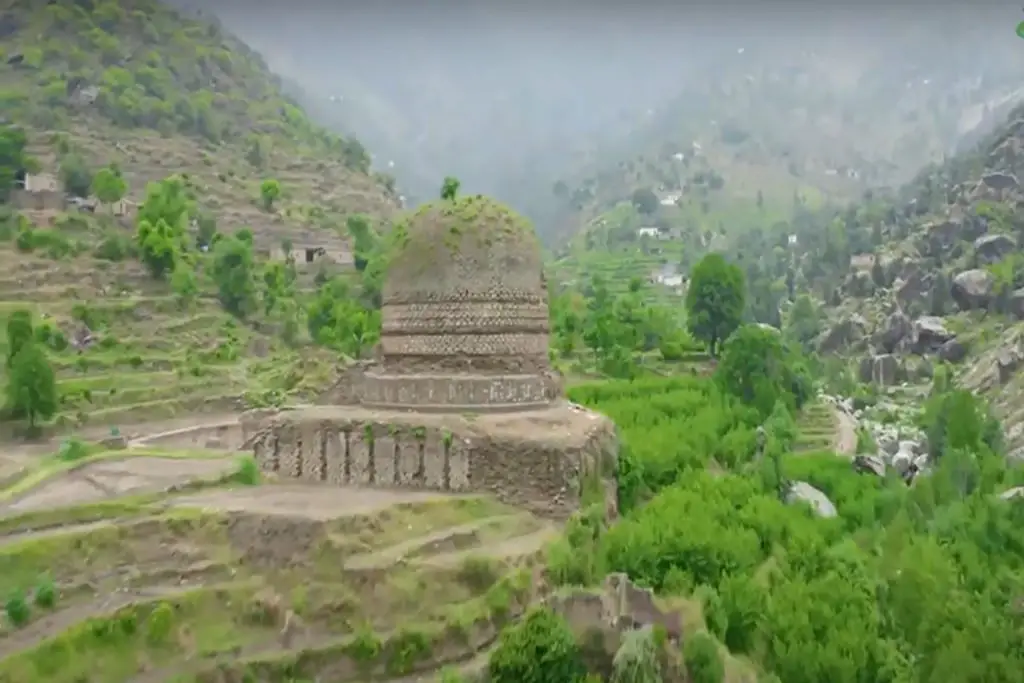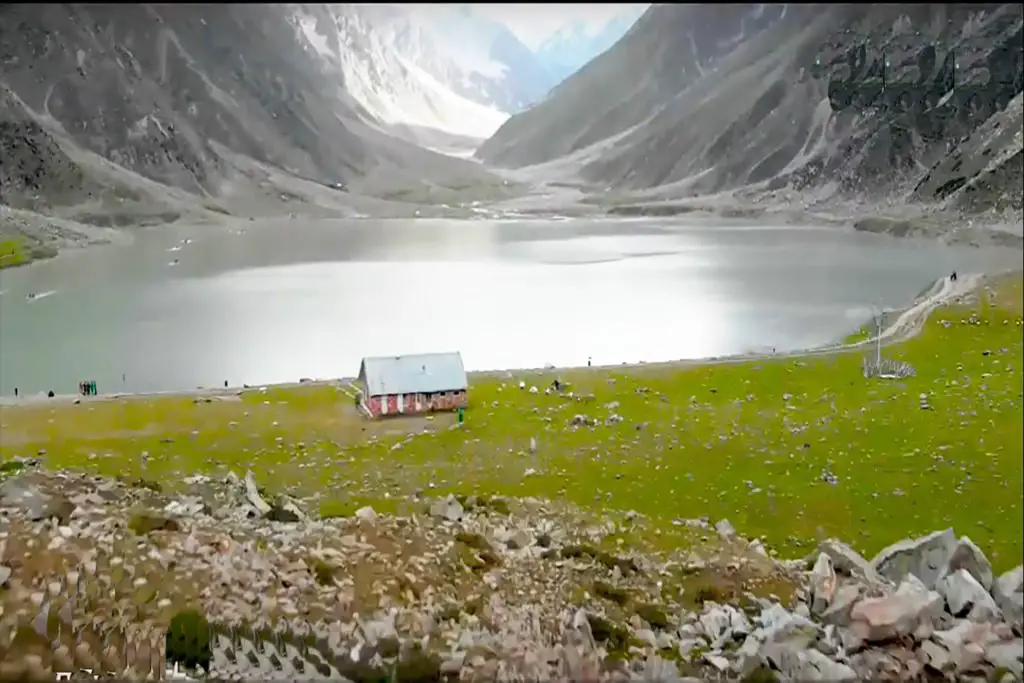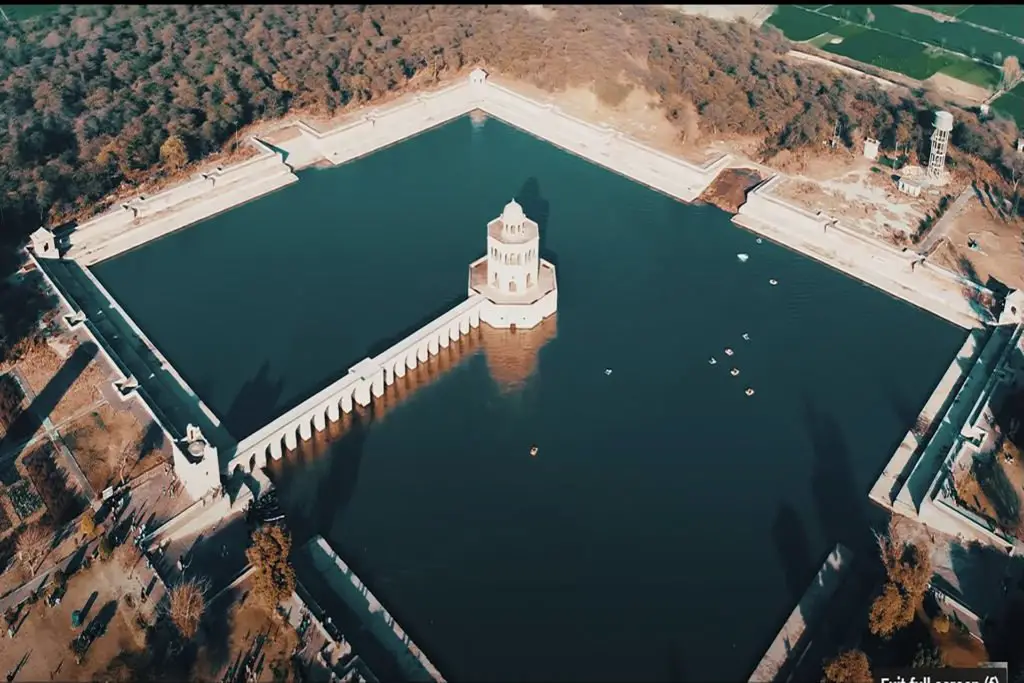The Amluk Dara Stupa is located in the Swat Valley of Pakistan. It is part of the Gandhara civilization in Amluk Dara. The stupa is believed to have been built in the third century. Amluk dara stupa was first discovered by the Hungarian-British archaeologist Sir Aurel Stein in 1926. It was later studied by Domenico Faccena in the 1960s and 1970s.
The foundation of the stupa is a square plinth about 4 meters thick. This is surmounted by a hemispherical dome measuring 7 meters high and 21 meters in diameter, making it visible from miles away. Although it is the best example of a stupa in Swat, it is unprotected and being damaged by treasure hunters.
Location of Amluk Dara Stupa in Swat
Amluk-Dara Stupa is located about 2 km north of Nawagai village in the beautiful little Amlok Dara valley, on the main road to Buner. One has to walk about 1 km through the village to reach the place.
Design of Amlukdara Stupa
The tall stupa stands prominently visible from the surroundings, naturally protected by the great Mount Elum. The Amluk Dara Stupa, an architectural gem in the Swat Valley, boasts a magnificent square plinth adorned with a torus and scotch pattern base molding, spanning an impressive 34 meters in diameter. Elevating this structure to a height of approximately 4 meters, the square plinth sets the stage for a captivating journey through this ancient marvel.
Cylindrical Grandeur:
Ascending from the square plinth, a three-story cylindrical drum, measuring 9 meters in dimensions, takes its place, resting on a lofty square plinth. A sprawling 5-meter wide ambulatory surrounds this cylindrical masterpiece, inviting exploration and contemplation.
The pinnacle of the Amluk Dara Stupa is crowned by a grand hemispherical dome, soaring to a height of 7 meters. The drum supporting this dome is a colossal 21 meters in diameter, possibly the largest in the Ilam Valley. A defining feature is the thick ledge, intermittently supported by brackets at 0.30 cm intervals, dividing the drum.
Architectural Finesse:
From base to dome, the Amluk Dara Stupa showcases meticulous semi-pincer masonry, preserving intricate architectural details reminiscent of the Gandhara Valley during the Kushanas period. The semi-pincer masonry, once covered in stucco plaster, still leaves traces, providing a glimpse into the rich artistic legacy of the region.
Iconic Corinthian Columns and Fallen “Umbrellas”:
Corinthian columns of small dark stones embellish the stage and lower drum of the stupa. On the east side of the stupa podium lie four fallen stone “umbrellas,” once adorning the dome. The largest measures 4 meters, while the smallest boasts a diameter of 1.82 meters and a thickness of 30 centimeters.
Historical Significance and Disturbances:
Amluk Dara Stupa, dating back to the third century, has witnessed the passage of time and the disruptions caused by treasure hunters. Despite being explored in 1938 by Barger and Wright, who recovered Gandhara sculptures, the exact period of the site remains elusive. The site’s historical value is underscored by its location on the route taken by Hindus on their annual pilgrimage to Mount Elum.
A Rediscovery Unveiled:
Sheltered by Mount Elum, the Amluk Dara Stupa recently witnessed a rediscovery, revealing an entire complex surrounding the four-meter stupa. Initially unearthed by Sir Aurel Stein in 1926, further exploration by the Italian Archaeological Mission and Khyber-Pakhtunkhwa Directorate of Archeology and Museums has exposed the intricacies of this ancient relic.
Preservation Imperative:
The Amluk Dara Stupa, marred by the scars of treasure hunters, calls for urgent attention from the concerned authorities. Neglecting the preservation of this magnificent monument risks depriving future generations of a glimpse into the glorious past of the Swat Valley.
An Unveiling Legacy:
As excavations continue to unfold the layers of history and culture at Amluk Dara Stupa, the site stands as a testament to the resilience of time. Amidst the lush landscapes of Swat Valley, this ancient relic invites contemplation and exploration, beckoning both locals and travelers to witness the legacy it unfolds.
The ancient relic was vandalized and looted by archaeological smugglers, where illegal excavations took place until recently. The site has already been selected for the Archeology Community Tourism (ACT) dig, the K-P Archeology department has asked the authorities to start operations a little earlier than planned after the police arrested some smugglers at the site.
Sculptures or fragments of stupa sculptural decoration, interesting architecture – including a small shrine with a pyramidal roof built right in the middle of the main stupa staircase – stucco decoration, sherds, and painted Shahish pottery from the 7th–11th centuries were discovered during excavation.







